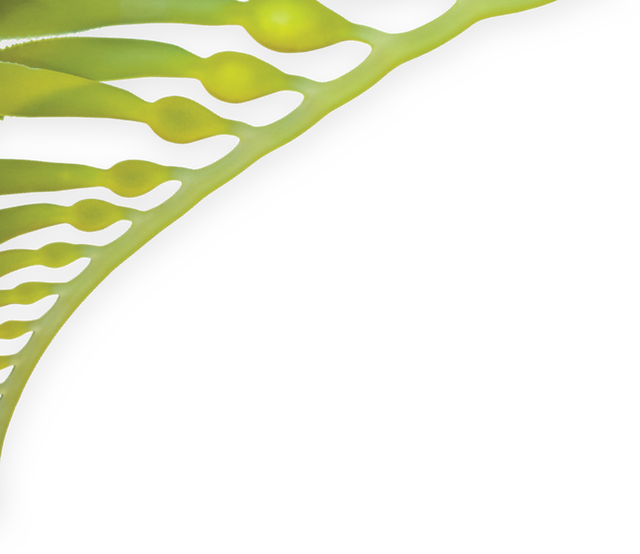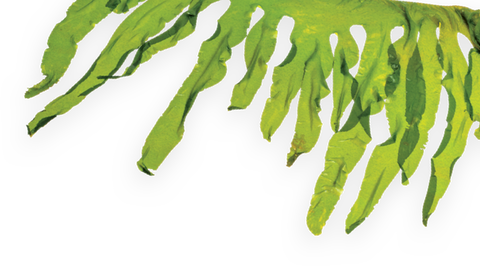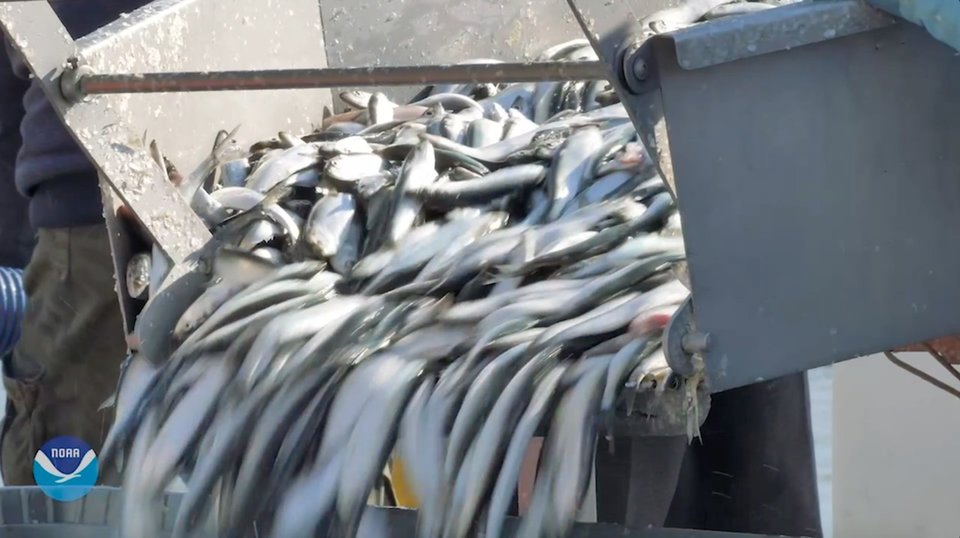It’slateApril.MostfarmersinNorthAmericahavejustfinishedplantingtheircrops.BrenSmithisharvestinghisnearThimbleIslandinLongIsland Sound.
Ifthatsoundsunusualtoyou,it’sbecauseSmith’sfarmisunusual.Insteadofharvestingcropswithatractor,Smithusesaboat.Andinsteadofgrowingcorn,orwheat,orbeans,Smith grows…seaweed!
Welcometotheworldofocean farming.
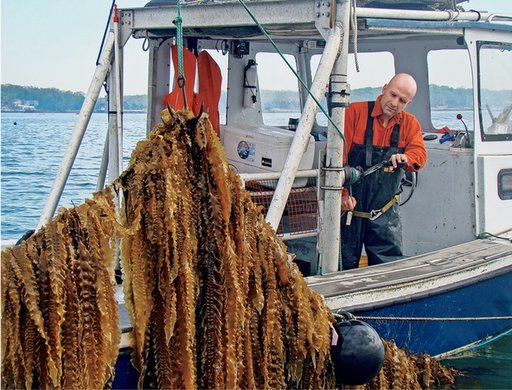
BrenSmithcheckshowwelltheseaweedonhisfarmis growing.
AHiddenFarm
Outhereonthewater,it’seasytomissBrenSmith’sfarm.Youcouldrowrightoveritandneverevenknowit.Butthereare clues.
Youmightnoticeaseriesofwhitefloatingballscalledbuoysbobbingupanddownacrossthewide,wavysurface.Followthosebuoyswithyoureyesandconnectthemwithimaginarylines,likeagiantconnect-the-dotspuzzle.You’llseethattheyformtheedgesofahugeareathesizeof30footballfields.That’stheborderofthe farm.
Lookcloser.Black buoysdotthewaterinsidetheborder.Theymayseemscatteredatfirst,spacedmorethanacouplebuslengthsapart.Theblack buoysformlongrows.Thosebuoysmarkrowsof crops.
Butdon’texpecttoseeplantspokingabovethewater.Thewholeideaofanoceanfarmisthateverythingisunderthesea,likeanunderwatergarden.It’sanideathatBrenSmithhasturnedintoalifelong passion.
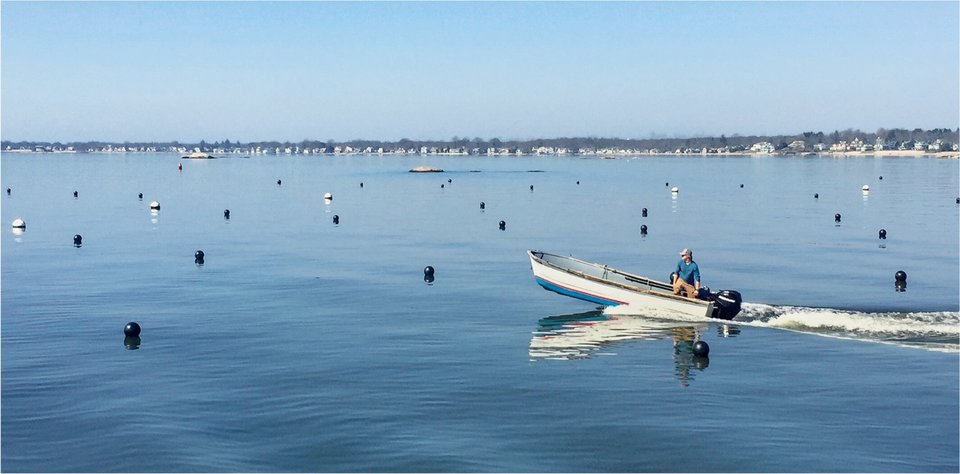
TheseblackandwhitebuoysmarkpartoftheparametersofBrenSmith'socean farm.
ANewKindofFarming
Smithalwaysknewhewantedtoearnhislivingontheocean.Andfromthetimehewasateenager,that’sexactlywhathedid.Hebecameacommercialfisher.WhethercatchingcodintheNorthAtlanticorseekingsalmonoffthecoastofAlaska,Smithlovedlifeonthesea.Helovedthefreedomofbeinghisownboss.Mostlyhelovedtheideaofprovidingfoodfor people.
ButSmithwastroubled.Henoticedthatthefishingboatswerechuggingfartherandfartherouttoseatofindfish.That’sbecausefishwerebeingtakenfromtheoceanfasterthantheycouldbereplaced.Thefisherswereoverfishing.Whenonepartoftheoceanranoutoffish,theboatsmoved on.
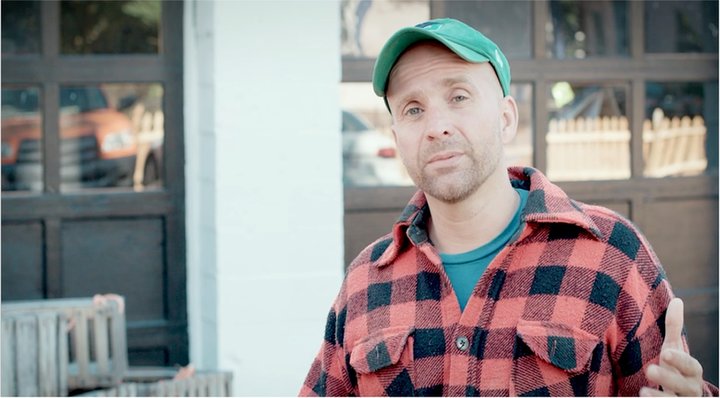
MeetBren Smith.
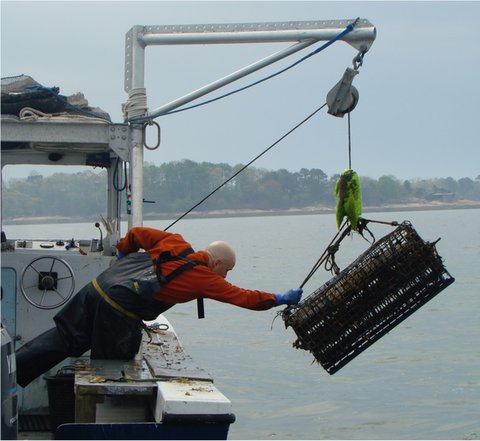
BrenSmithhaulsinabasketfromhisocean farm.
Notonlywerefishpopulationsgettingsmallerandsmaller,theirhomeswerebeingdestroyed,too.Fishersoftencaughtfishbydragginganetbehindtheboatalongtheseafloor.Thenetstoreupreefsandotherecosystemswherefishandmanykindsofseaanimals live.
Smithsawallthis.Hewaspartofit.Andhedidn’tlikeit.Hethoughttheremustbeabetterwaytoharvestfoodfromthesea.Weshouldbeabletouseoceanresourcesinasustainableway.Thatmeansusingsomethingwithoutusingitupandwithoutharmingthe environment.
Smithsoughttheadviceofascientistwhohappenedtobeanexpertonseaweed.Smithknewalittlebitaboutseaweed.Heknewitwastheslimystuffthatwashesuponrocks,clogsfishingnets,andgetstwistedaroundboatpropellers.Heknewitsortoflookslikeaplantbutisn’taplant—it’satypeofalgae.Buthealsoknewthatitisedible.ManykindsofseaweedarecommonfoodsinAsiaandwerebecomingmorepopulararoundtheworld,includingNorth America.
